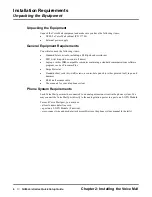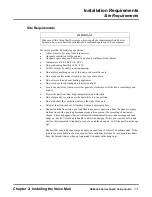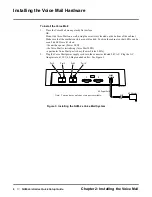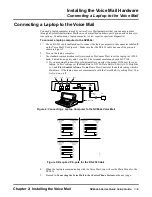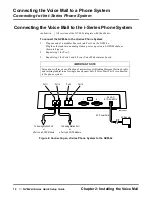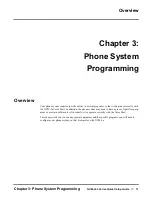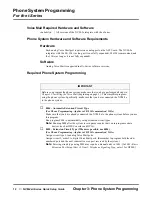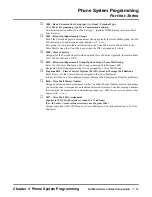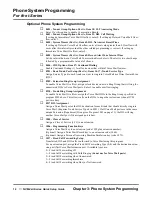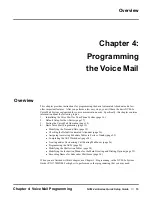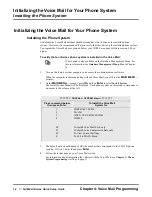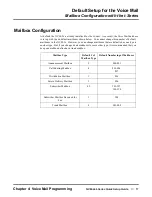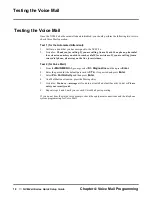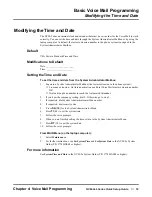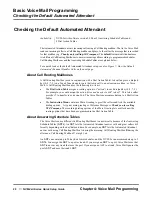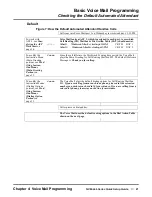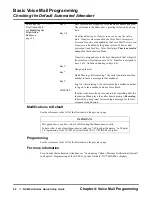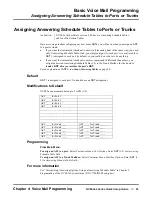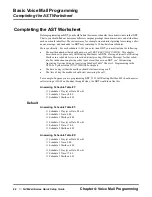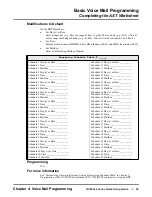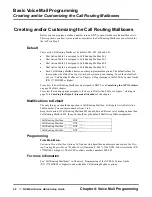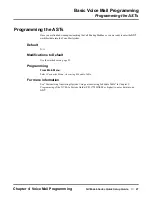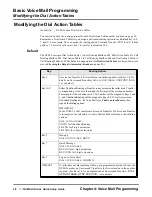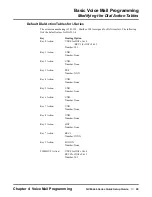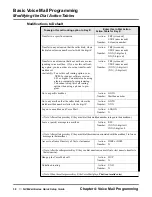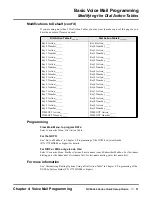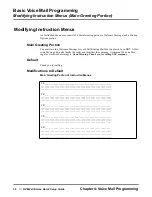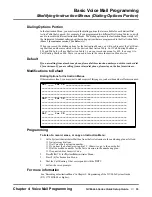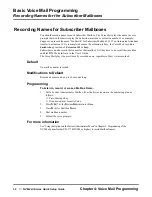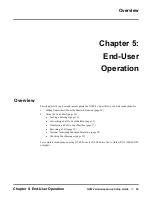
Basic Voice Mail Programming
Checking the Default Automated Attendant
20
◆
NVM-2e/i-Series Quick Setup Guide
Chapter 4: Voice Mail Programming
Checking the Defaul t Autom ated Attendant
Checking the Default Automated Attendant
The Automated Attendant answers incoming calls using a Call Routing mailbox. That is, the Voice Mail
sends an incoming caller to a Call Routing mailbox and plays, to the caller, the message that is recorded
for that mailbox (e.g., Thank you for calling ABC company.) The default Automated Attendant uses
two different Call Routing Mailboxes to answer incoming calls according to programmed schedules.
Call Routing Mailboxes and the Answering Schedule Tables are explained below.
For a quick look at the default Automated Attendant setup, see also Figure 7: How the Default
Automated Attendant Handles Calls on the next page.
About Call Routing Mailboxes
A Call Routing Mailbox (used in conjunction with a Dial Action Table) lets callers press a dialpad
key (0-9, *, #) on a Touch Tone phone to route their own call to an extension, mailbox, or Voice
Mail. A Call Routing Mailbox uses the following two items:
●
The Dial Action Table assigns a routing option (or “action”) to each dialpad key (0-9, *, #).
For example, you could assign the action, Screened transfer to 306" to key 7. This lets a caller
press key 7 to transfer to extension 306. The Voice Mail can accommodate up to 4 Dial Action
Tables.
●
The Instruction Menu contains a Main Greeting to greet the callers and lists the available
dialing options. A typical main greeting or Welcome Message is: Thank you for calling
XYZ Company. The recording dialing options of the Main Greeting lets a caller know the
routing options that have been programmed in the Dial Action Table.
About Answering Schedule Tables
The Voice Mail can use different Call Routing Mailboxes to answer calls, because of the Answering
Schedule Tables
(ASTs).
An
AST
lets the Automated Attendant answer calls and greet callers dif-
ferently depending on the day/date and time. For example, an
AST
lets the Automated Attendant
answer calls using Call Routing Mailbox A during the morning, Call Routing Mailbox
B
during the
afternoon, Call Routing Mailbox
C
at night, etc.
An
AST
can contain up to 20 day/date/time schedules, and the NVM-2e can accommodate up to 2
ASTs.
You assign the
AST
to a port or trunk. If you assign an
AST
to a port, Voice Mail uses that
AST
to answer any trunk that uses the port. If you assign an AST to a trunk, Voice Mail ignores the
port's
AST
and uses the trunk's
AST
.
Availability:
NVM-2e with software version 2.00 has 2 Answering Schedule Tables and
4 Dial Action Tables.

